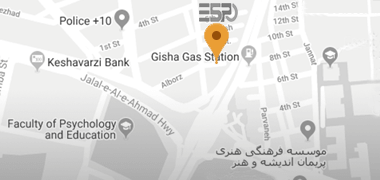
هتل بیمارستان (Hotel Hospital) یک مفهوم نوین در طراحی بیمارستانها است که هدف آن ترکیب خدمات پزشکی و درمانی با امکانات و راحتی هتلها میباشد. در این نوع بیمارستانها، علاوه بر ارائه خدمات درمانی پیشرفته، تلاش میشود که تجربه اقامت بیماران و همراهان آنها به شکل مطلوبتر و راحتتری شبیه به یک اقامت در هتل ارائه شود. این رویکرد بر اساس نیاز بیماران و همراهان به فضای آرامشبخش و خدمات رفاهی کامل در کنار درمانهای پزشکی ایجاد شده است.
ویژگیهای هتل بیمارستان:
-
فضای رفاهی مشابه هتل: اتاقهای بستری به شکل اتاقهای هتلی طراحی میشوند. تختها راحت و قابل تنظیم، سرویس بهداشتی و حمام مجهز به امکانات لوکس و مدرن، تلویزیون، اینترنت بیسیم، و فضای استراحت برای همراهان در اتاقها وجود دارد.
-
خدمات اختصاصی: در هتل بیمارستانها، بیماران و همراهان میتوانند از خدمات اتاق (Room Service)، خدمات پذیرایی، و حتی خدماتی مانند ماساژ یا درمانهای آرامشبخش بهرهمند شوند.
-
حریم خصوصی و محیط آرام: برخلاف بیمارستانهای معمولی که بخشهای بستری ممکن است شلوغ باشند، هتل بیمارستانها به گونهای طراحی میشوند که محیطی ساکت و خصوصی برای بیماران فراهم آورند.
-
دسترسی به درمانهای تخصصی: علیرغم تمام امکانات رفاهی، این بیمارستانها تمامی تجهیزات پزشکی پیشرفته و تیمهای درمانی تخصصی را نیز در اختیار دارند تا خدمات درمانی و جراحی در سطح بالا را ارائه دهند.
-
بخش VIP و خدمات ویژه: برخی هتل بیمارستانها بخشهای VIP دارند که برای بیماران خاص یا شخصیتهای برجسته طراحی شدهاند و امکانات و خدمات سفارشیسازی شده در این بخشها ارائه میشود.
-
افزایش راحتی و رفاه بیماران:
بیمارانی که تحت درمان طولانیمدت قرار دارند یا به مراقبت ویژه نیاز دارند، میتوانند از فضایی که علاوه بر خدمات پزشکی، امکانات رفاهی کامل دارد بهرهمند شوند. این امر به بهبود وضعیت روانی بیماران کمک میکند و ممکن است باعث تسریع در روند بهبودی آنها شود. -
راحتی همراهان:
همراهان بیماران نیز میتوانند از امکانات رفاهی هتل مانند اتاقهای مخصوص و خدمات غذایی استفاده کنند که اقامت آنها در کنار بیمار را لذتبخشتر میکند. -
تأثیر مثبت بر سلامت روحی بیمار:
محیط آرام و دلپذیر هتل بیمارستانها به کاهش استرس و اضطراب بیماران کمک میکند و در بهبود کلی وضعیت روحی و جسمی آنها نقش دارد.
کاربردها:
-
بیماران بینالمللی:
هتل بیمارستانها به خصوص برای بیمارانی که از کشورهای دیگر برای درمان به بیمارستان میآیند بسیار مناسب هستند، زیرا آنها به اقامت طولانیتری نیاز دارند و امکانات رفاهی نقش مهمی در آسایش آنها دارد. -
مراقبتهای ویژه یا طولانیمدت:
بیمارانی که به مراقبتهای طولانیمدت نیاز دارند، مانند بیماران قلبی، سرطانی یا بیماران پس از جراحیهای سنگین، میتوانند از اقامت در هتل بیمارستانها بهرهمند شوند.
شرکت اسپو (ESPO) با تخصص در طراحی و اجرای فضاهای درمانی و بیمارستانی، میتواند نقش مؤثری در طراحی و ساخت هتل بیمارستانها ایفا کند. تجربه این شرکت در طراحی بیمارستانهای پیشرفته و فضاهای درمانی کارآمد، به آنها این توانایی را میدهد تا پروژههای درمانی و بیمارستانی را با رعایت استانداردهای بینالمللی و ایجاد فضاهایی با کیفیت بالا، رفاه و آسایش بیمار و همراهان را فراهم کنند.












